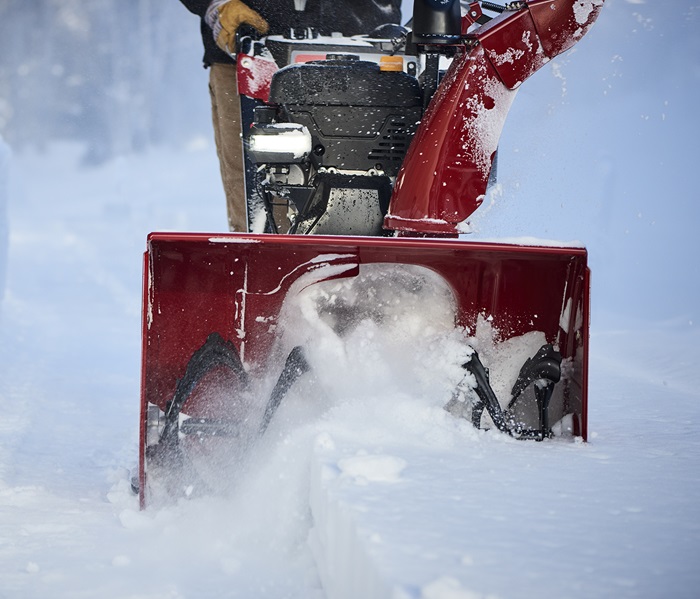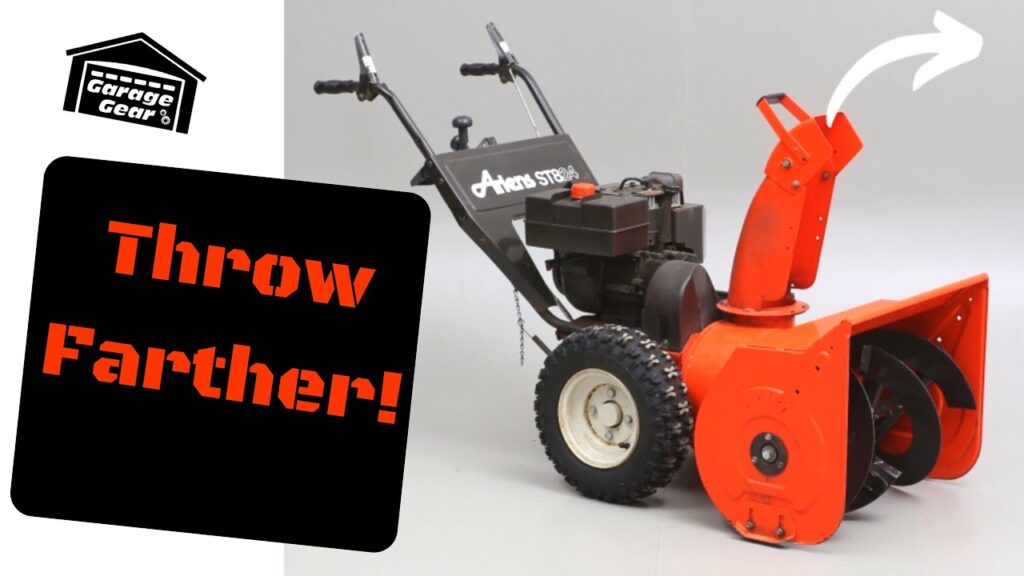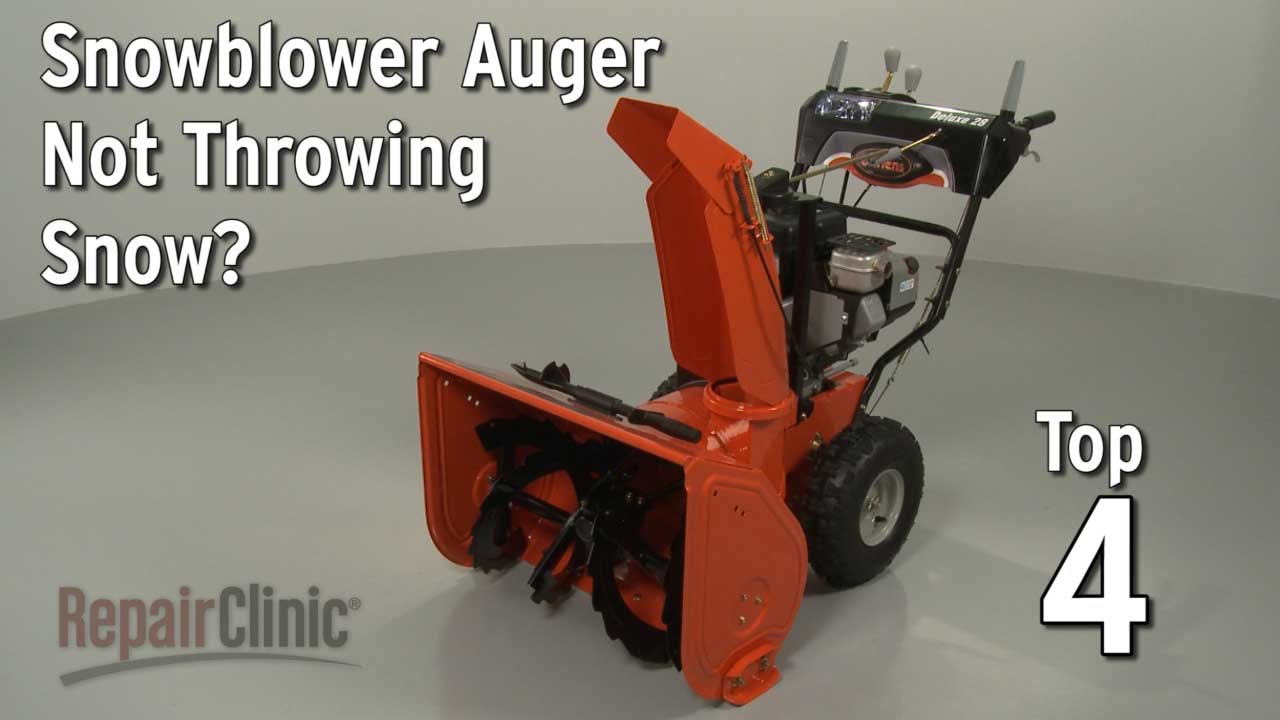Hello there friends! Have you ever wondered why your snowblower seems to struggle when it comes to throwing heavy snow? Well, fear not, because we’re here to shed some light on this common issue. In this article, we’ll be diving into the potential reasons behind why your snowblower might be having trouble dealing with those heavy snowfalls.
Curious to know more? Well, in our informative article, we’ll be exploring various factors that could be affecting the performance of your snowblower when it comes to clearing heavy snow. From issues with the engine and auger mechanism to improper maintenance and settings, we’ll cover it all. So if you’ve been scratching your head wondering why your snowblower isn’t up to the task, read on to discover some helpful insights and potential solutions. We’ve got your back!

This image is property of blog.lawneq.com.
Common Causes
When winter arrives and heavy snow falls, it can be frustrating to find that your snowblower is not throwing the snow as effectively as it should. There are several common causes for this issue, ranging from simple maintenance problems to more complex mechanical issues. In this article, we will explore the common causes of why your snowblower may not be throwing heavy snow and provide solutions to help you get the most out of your machine.
Clogged Auger
One of the most common causes of a snowblower not throwing heavy snow is a clogged auger. The auger is responsible for breaking up the snow and feeding it into the chute, where it is then thrown out of the machine. If the auger becomes clogged, it can prevent the snowblower from effectively clearing the snow.
Impacted Snow or Ice
One reason for a clogged auger is impacted snow or ice. Snow that is wet and heavy can easily become packed into the auger, causing it to lose its ability to break up and throw the snow properly. Similarly, if ice forms on the auger, it can hinder its performance. To prevent this, it is important to clear the auger of snow and ice regularly during operation.
Foreign Objects
Another common cause of a clogged auger is the presence of foreign objects. Small rocks, sticks, or debris can get caught in the auger and prevent it from spinning freely. This can lead to a decrease in the snowblower’s throwing power. It is essential to inspect the auger for any foreign objects and remove them before using the machine.
Auger Pin Shear
In some cases, a clogged auger may be the result of an auger pin shear. The auger pin connects the auger to the impeller shaft, allowing it to rotate and throw the snow. If the auger pin shears or becomes damaged, it can cause the auger to stop spinning altogether. It is crucial to check the auger pin regularly and replace it if necessary.
Worn Impeller Blades
Another reason why your snowblower may not be throwing heavy snow is due to worn impeller blades. The impeller is responsible for forcefully ejecting the snow through the chute. If the blades become worn or damaged, they may not be able to generate enough force to effectively throw the snow.
Dull Blades
Over time, the impeller blades can become dull due to normal wear and tear. Dull blades will not be able to cut through the snow as effectively, resulting in reduced throwing power. It is advisable to sharpen the impeller blades regularly to ensure optimal performance.
Bent Blades
In addition to dull blades, bent blades can also contribute to a decrease in throwing power. Blades can become bent if they come into contact with hard objects such as rocks or ice. Bent blades may not generate enough force to effectively throw heavy snow. It is crucial to inspect the impeller blades for any signs of bending and replace them if necessary.
Stuck Bearings
Stuck bearings can also affect the performance of the impeller blades. If the bearings become dirty or worn, they may not allow the impeller to spin freely, resulting in reduced throwing power. Lubricating the bearings regularly can help prevent them from becoming stuck and ensure smooth operation.
Imbalanced Impeller
An imbalanced impeller can also contribute to the snowblower’s inability to throw heavy snow effectively. An impeller can become imbalanced due to debris or ice build-up, causing it to spin unevenly. This can result in reduced throwing power or vibrations during operation. It is essential to inspect the impeller for balance issues and remove any build-up to restore optimal performance.
Loose Belt Tension
Another possible cause of a snowblower not throwing heavy snow is loose belt tension. The belts in a snowblower are responsible for transferring power from the engine to the auger and impeller. If the belt tension is too loose, it can result in decreased throwing power.
Worn Belt
Over time, the belts in a snowblower can become worn due to continuous use. When the belt becomes worn, it may lose its grip and slip during operation, reducing the snowblower’s throwing power. Regularly inspecting and replacing worn belts can help maintain optimal belt tension and ensure proper snow throwing.
Slippage
In addition to a worn belt, slippage can also occur if the belt tension is too loose. If the belt is not properly tensioned, it may slip during operation, resulting in reduced throwing power. Regularly checking and adjusting the belt tension can help ensure that it remains at the proper level for optimal performance.
Improper Adjustment
Improperly adjusted belts can also contribute to a snowblower’s inability to throw heavy snow. If the belt tension is too tight, it can strain the engine and impede the snowblower’s performance. It is essential to follow the manufacturer’s guidelines for belt adjustment to ensure the optimal performance of your snowblower.
Low Engine Power
Low engine power can be another significant reason why your snowblower may struggle to throw heavy snow effectively. Several factors can contribute to a decrease in engine power, affecting the overall performance of the machine.
Dirty Air Filter
A dirty air filter can restrict airflow to the engine, leading to a decrease in engine power. If the engine does not receive enough air, it may not be able to generate the necessary power to throw heavy snow effectively. Regularly cleaning or replacing the air filter can help maintain optimal engine performance.
Spark Plug Issues
Faulty spark plugs can also contribute to low engine power. If the spark plugs are dirty or worn, it can affect the ignition process and result in a decrease in engine power. Cleaning or replacing spark plugs regularly can help maintain proper engine performance and maximize the snowblower’s throwing capability.
Fuel Problems
Issues with fuel supply can also affect the engine’s power output. Stale or contaminated fuel can lead to poor combustion, resulting in decreased engine power. Additionally, using fuel with an incorrect octane rating can also impact the engine’s performance. It is advisable to use fresh, clean fuel with the appropriate octane rating to ensure optimal engine power.
Engine Wear
Over time, the engine components can become worn, leading to a decrease in engine power. Regular maintenance, such as oil changes and lubrication, can help minimize engine wear and keep it running at its best. If engine wear becomes significant, it may be necessary to seek professional help for repairs or consider replacing the snowblower.
Preventive Maintenance
To prevent your snowblower from experiencing issues with throwing heavy snow, regular preventive maintenance is crucial. By following these maintenance tasks, you can ensure that your snowblower performs optimally throughout the winter season.
Regular Cleaning
Regularly cleaning your snowblower, especially after each use, is essential to prevent snow and ice buildup. Clearing the auger, impeller, and chute of snow and debris will help maintain optimal throwing power. Additionally, cleaning the engine and other components will minimize the risk of dirt and debris interfering with the machine’s performance.
Lubrication
Proper lubrication of moving parts is vital to ensure smooth operation and prevent wear and tear. Applying lubricant to the auger, impeller, bearings, and other moving parts as recommended by the manufacturer will help prevent sticking and increase the overall efficiency of the snowblower.
Inspecting and Replacing Blades
Regularly inspecting the impeller blades for dullness, bending, or damage is critical. If any issues are found, it is important to replace the blades promptly to ensure optimal snow-throwing power. Keeping spare blades on hand can help minimize downtime and allow for quick replacements when necessary.
Belt Maintenance
Check the belt tension regularly and adjust it as needed to ensure the proper transfer of power from the engine to the auger and impeller. Additionally, inspect the belts for signs of wear and replace them as necessary to maintain optimal performance.
Engine Care
Regularly maintaining the engine is essential for optimal snowblower performance. This includes changing the oil, replacing spark plugs, and checking the fuel system for issues. Follow the manufacturer’s guidelines for engine maintenance to keep it running smoothly and ensure maximum throwing power.

This image is property of i.ytimg.com.
Proper Usage Techniques
In addition to preventive maintenance, proper usage techniques can also help enhance your snowblower’s ability to throw heavy snow effectively. By following these techniques, you can optimize the machine’s performance and minimize potential issues.
Clearing Snow in Multiple Passes
Instead of trying to clear heavy snow in one pass, it is often more effective to make multiple passes. This allows the snowblower to break up and throw the snow more easily, resulting in better throwing power. Take your time and go slowly to ensure thorough snow removal.
Avoiding Overloading
Avoid overloading the snowblower by attempting to clear snow that is too deep or heavy for the machine to handle. A snowblower has specific limitations, and exceeding them can cause damage to the machine and reduce its throwing power. Pay attention to the snowblower’s capacity and clear snow within its recommended limits.
Keeping the Auger Clear
Regularly clearing the auger of snow and ice buildup during operation is essential to prevent clogging and maintain optimal throwing power. If you notice a decrease in throwing power while using the snowblower, stop and clear any snow or ice from the auger before continuing. This will help ensure consistent performance.

This image is property of i.ytimg.com.
Seeking Professional Help
If you have followed all the preventive maintenance tips and proper usage techniques outlined above and are still experiencing issues with your snowblower’s ability to throw heavy snow, it may be time to seek professional help. Depending on the complexity of the issue, a professional technician can diagnose and repair the problem or provide recommendations for repair or replacement options.
Consulting a Technician
A certified technician can provide invaluable expertise when it comes to diagnosing and repairing snowblower issues. They have the knowledge and experience necessary to identify the root cause of the problem and can recommend the best course of action to restore your snowblower’s throwing power.
Identifying Complex Issues
In some cases, the cause of your snowblower’s decreased throwing power may be more complex and require professional attention. Issues such as engine malfunctions or electrical problems may be beyond the scope of a typical homeowner’s repair capabilities. A professional technician can accurately identify and address these issues to ensure optimal performance.
Repair or Replacement Options
If your snowblower is experiencing significant mechanical problems or is an older model, it may be more cost-effective to consider repair or replacement options. A professional technician can help you evaluate the condition of your snowblower and provide recommendations based on your specific needs and budget.

This image is property of i.ytimg.com.
Conclusion
When your snowblower doesn’t throw heavy snow effectively, it can be frustrating and leave you with a significant amount of manual labor. However, by understanding the common causes and taking preventive measures, you can ensure that your snowblower performs optimally throughout the winter season. Regular maintenance, proper usage techniques, and seeking professional help when needed will help you get the most out of your snowblower and make clearing heavy snow a breeze.

This image is property of i.ytimg.com.
